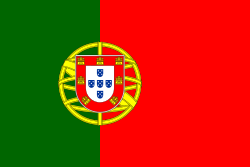Frankrikes Grand Prix
| Circuit Paul Ricard |
|---|
Frankrikes Grand Prix är en racingtävling som körs i Frankrike sedan 1906. Då vanns loppet av ungraren Ferenc Szisz.
Loppet är sedan 1950 en deltävling i formel 1-VM och har därefter arrangerats samtliga säsonger utom 1955 samt säsongerna 2009-2017 och 2020.
Frankrikes GP har under åren körts på flera banor. Formel 1-loppen har i huvudsak körts på Circuit de Reims-Gueux, Circuit de Dijon-Prenois, Circuit Paul Ricard och Circuit de Nevers Magny-Cours.
Vinnare av Frankrikes Grand Prix
Ljusröd bakgrund betyder att loppet inte ingick i formel 1-VM.
Ljusgul bakgrund betyder att loppet ingick i Europamästerskapet för Grand Prix-förare.
Anmärkningslista
Referenser
Noter
- ^ Smith, Luke (27 april 2020). ”French GP announces cancellation of 2020 F1 race” (på engelska). motorsport.com. Motorsport Network. https://www.motorsport.com/f1/news/2020-french-gp-cancelled-coronavirus/4785260/. Läst 9 maj 2021.
| ||||||||
Media som används på denna webbplats
Författare/Upphovsman: F l a n k e r, Licens: CC BY-SA 2.5
Flag of the Kingdom of Sardinia (1851-1861) and of the Kingdom of Italy (1861-1946). Use: Civil flag and ensign. In a governmental or a military context, the crowned version (see Crowned version) was always used (as State flag and naval ensign).
US Flag with 48 stars. In use for 47 years from July 4, 1912, to July 3, 1959.
National flag and merchant ensign of Germany from 1933 to 1935.
The civil ensign and flag of Belgium. It is identical to Image:Flag of Belgium.svg except that it has a 2:3 ratio, instead of 13:15.
The flag of Brazil from 1968 to 1992 with 23 stars.
The Flag of Europe is the flag and emblem of the European Union (EU) and Council of Europe (CoE). It consists of a circle of 12 golden (yellow) stars on a blue background. It was created in 1955 by the CoE and adopted by the EU, then the European Communities, in the 1980s.
The CoE and EU are distinct in membership and nature. The CoE is a 47-member international organisation dealing with human rights and rule of law, while the EU is a quasi-federal union of 27 states focused on economic integration and political cooperation. Today, the flag is mostly associated with the latter.
It was the intention of the CoE that the flag should come to represent Europe as a whole, and since its adoption the membership of the CoE covers nearly the entire continent. This is why the EU adopted the same flag. The flag has been used to represent Europe in sporting events and as a pro-democracy banner outside the Union.Flag of Portugal, created by Columbano Bordalo Pinheiro (1857–1929), officially adopted by Portuguese government in June 30th 1911 (in use since about November 1910). Color shades matching the RGB values officially reccomended here. (PMS values should be used for direct ink or textile; CMYK for 4-color offset printing on paper; this is an image for screen display, RGB should be used.)
Flag of South Africa, used between 1928 and 1982. It is identical to the 1982 to 1994 version except that the shade of blue is darker. It is also known as the "Oranje-Blanje-Blou".
A variant of the flag of the Kingdom of Hungary used between 12 January 1896 to 6 November 1915.
Författare/Upphovsman: Bbb2007, Licens: CC BY-SA 4.0
Circuit Paul Ricard layout used in 2018, including altered chicane on Mistral Straight
National flag and merchant ensign of Germany from 1933 to 1935.
Flag of the State of Nevada. The flag is described in Nevada Revised Statutes Chapter 235, Sec. 20 as follows: The body of the flag must be of solid cobalt blue. On the field in the upper left quarter thereof must be two sprays of Sagebrush with the stems crossed at the bottom to form a half wreath. Within the sprays must be a five-pointed silver star with one point up. The word “Nevada” must also be inscribed below the star and above the sprays, in a semicircular pattern with the letters spaced apart in equal increments, in the same style of letters as the words “Battle Born.” Above the wreath, and touching the tips thereof, must be a scroll bearing the words “Battle Born.” The scroll and the word “Nevada” must be golden-yellow. The lettering on the scroll must be black-colored sans serif gothic capital letters.















































